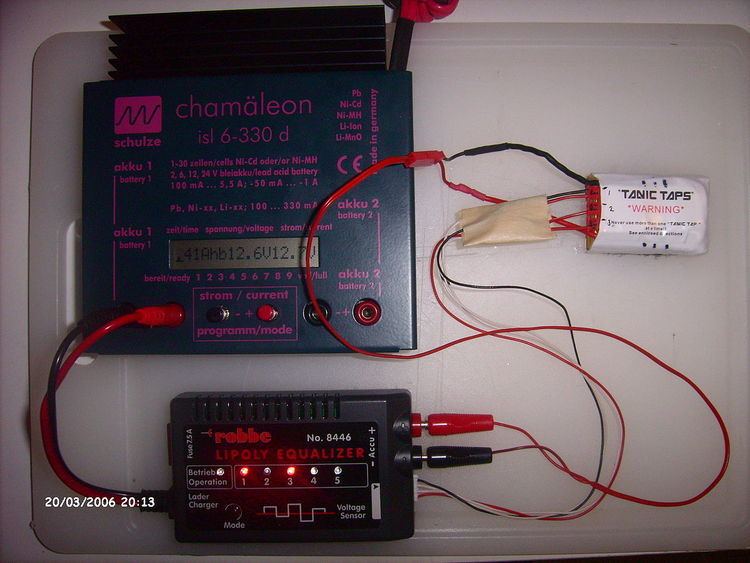 | ||
Battery balancing and battery redistribution refer to techniques that maximize the capacity of a battery pack with multiple cells in series to make all of its energy available for use and increase the battery's longevity. A battery balancer or battery regulator is a device in a battery pack that performs battery balancing. Balancers are often found in lithium-ion battery packs for cell phones and laptop computers. They can also be found in battery electric vehicle battery packs.
Typically, the individual cells in a battery have somewhat different capacities and may be at different levels of state of charge (SOC). Without redistribution, discharging must stop when the cell with the lowest capacity is empty (even though other cells are still not empty); this limits the energy that can be taken from and returned to the battery.
Without balancing, the cell of smallest capacity is a "weak point", it can be easily overcharged or over-discharged while cells with higher capacity undergo only partial cycle. For the higher capacity cells to undergo full charge/discharge cycle of the largest amplitude, balancer should "protect" the weaker cells; so that in a balanced battery, the cell with the largest capacity can be filled without overcharging any other (i.e., weaker, smaller) cell, and it can be emptied without over-discharging any other cell. Battery balancing is done by transferring energy from or to individual cells, until the SOC of the cell with the lowest capacity is equal to the battery's SOC.
Battery redistribution is sometimes distinguished from battery balancing by saying the latter stops at matching the cell's state of charge (SOC) only at one point (usually 100% SOC), so that the battery's capacity is only limited by the capacity of its weakest cell.
A full battery management system (BMS) might include active balancing as well as temperature monitoring, charging, and other features to maximize the life of a battery pack.
Technology
Balancing can be active or passive. The term battery regulator typically refers only to devices that perform passive balancing.
In passive balancing, energy is drawn from the most charged cell and is wasted as heat, usually through resistors.
In active balancing, energy is drawn from the most charged cell and transferred to the least charged cells, usually through DC-DC converters.
Battery balancing can be performed by DC-DC converters, in one of 3 topologies:
Typically, the power handled by each DC-DC converter is a few orders of magnitude lower than the power handled by the battery.
